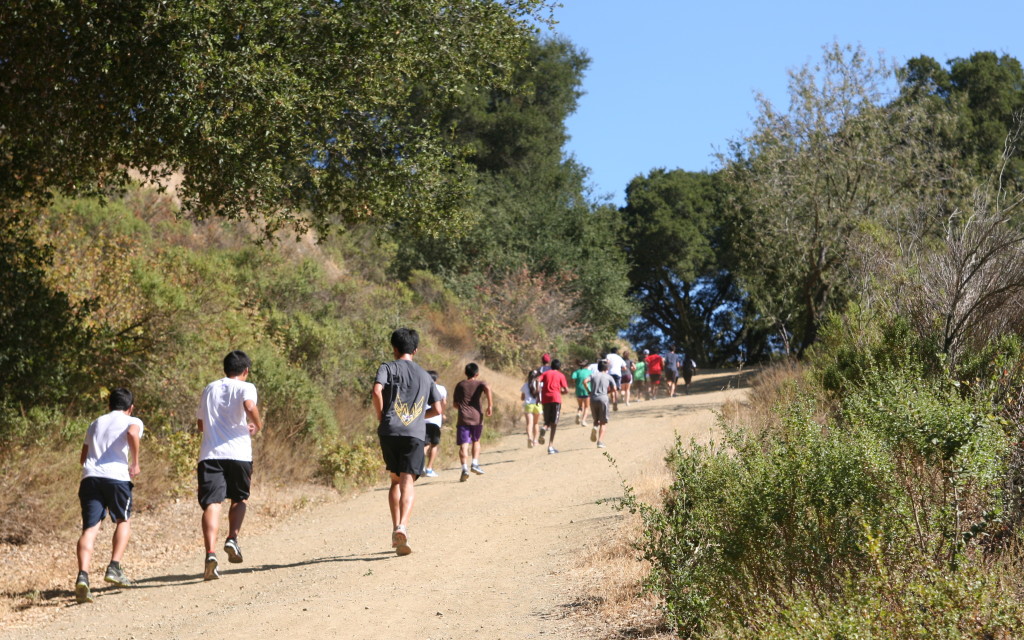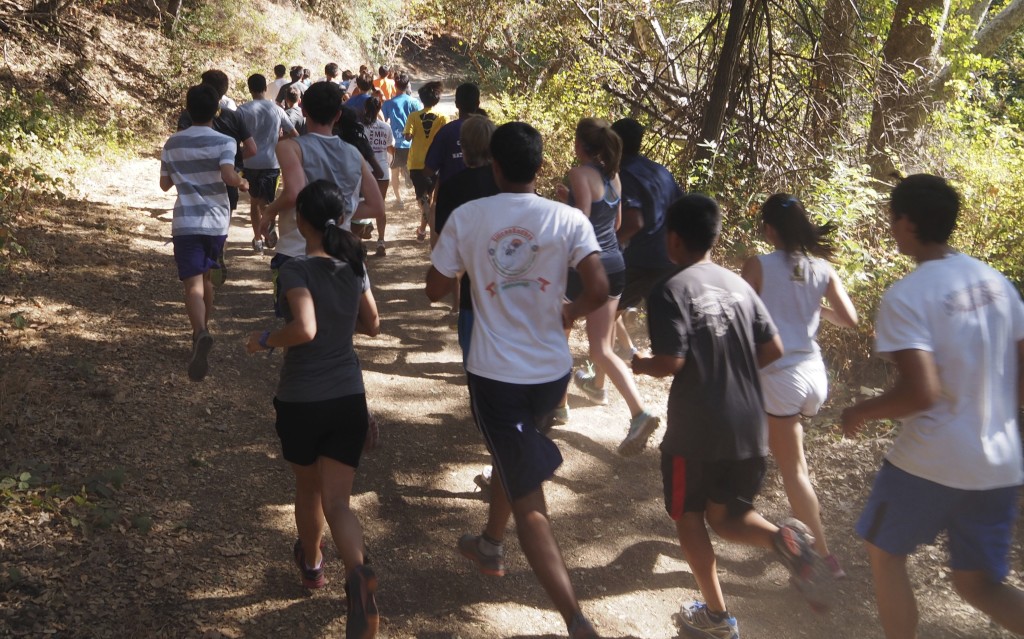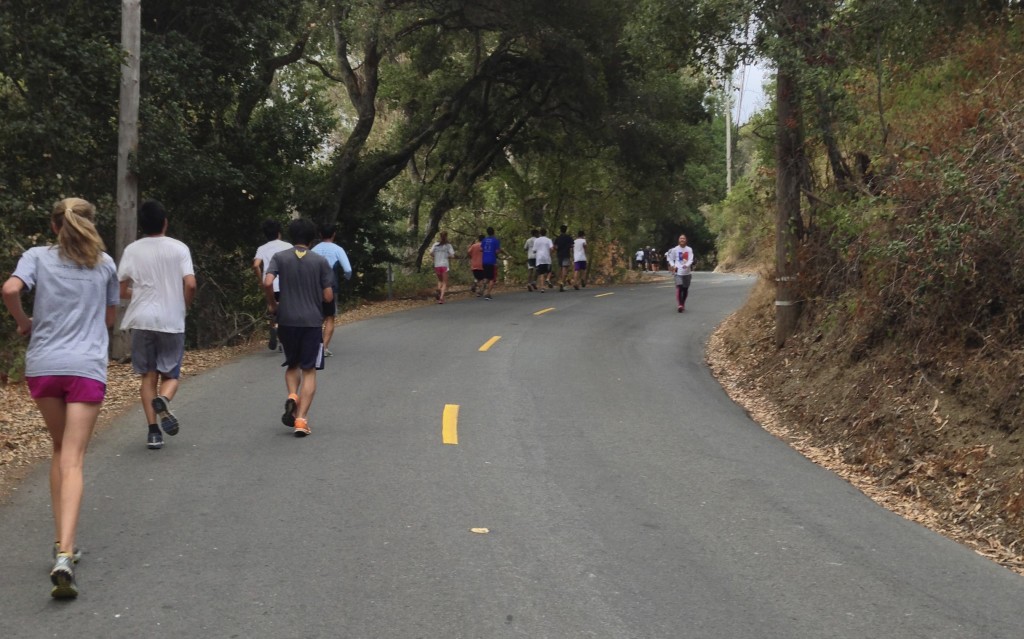We take our easy runs for granted. Many high school and college athletes—and athletes your coach’s age!—think that an easy run day is a day to just shuffle along the road, or even think that an easy run is a run that an athlete can skip. Au contraire, mon ami! You are so very wrong! Let’s take a longer look at the humble easy run!
Easy runs provide substantial paybacks. A run does not have to be a crushing effort in order to provide substantial training benefits.
What are some of the benefits of easy runs?
- Building volume: If we ran every run at tempo or race pace, we would have a high risk of injury and burn out and would not be able to accumulate the running volume that we can with easy running miles.
- Stimulate recovery: Increased blood flow to muscles from exercise can stimulate recovery from a prior workout. An easy run can actually help you recover and you will feel better that skipping practice and sitting around.
- Muscle adaptation: Easy runs recruit slow twitch muscle fibers, which are vital for distance runners. The more a muscle is used, the more it will adapt. Our slow twitch muscles will develop more resistance to fatigue and take more of the load while running, saving our fast twitch muscles for later in a race.
- Capillary development: With just four to six months of steady running, an athlete can increase the number of capillaries in exercising muscles by 25 to 50%! These capillaries can supply more oxygen, more efficiently to your muscles. This can benefit your health throughout your life as some of these capillaries will persist—even if you turn into a couch potato later in life L !
- Increase in fat burning enzymes: We all produce enzymes that help turn stored fat into energy for our muscles, and these enzymes are produced in higher volume when our bodies undergo sustained aerobic demands. The more consistently we run for a sustained period of time, the more our body is stimulated to adapt to these workloads. Easy runs help our bodies get the message that we are serious about running, forcing our body to adapt! You become a fat burning machine, better able to use your stored fat as an energy source.
- Building bone density and other structural adaptations: A runner impacts the ground with a force that is many times body weight with each step. These impacts spur bone development, which is critical for our health throughout our lives! (We only can gain bone mass until we are about 21 years old, and then we lose bone mass the rest of our lives. So running in high school might stop you from breaking a hip when you are 75 years old!) Our tendons and muscles also adapt to the workload, preparing us for the increased stresses of tempo runs, speed work—and races!
These physiological changes are all promoted by easy running. The gains in aerobic capacity, running economy and structural strength are made possible because of sustained running volume, and easy runs allow us to add volume with low injury risk. Even for elite runners, most of their weekly mileage will be done at an easy pace!
GUIDELINES FOR YOUR EASY RUNS
Hopefully we have your attention now! Let’s run through some guidelines for your easy runs.
An easy run can cover a huge range of distance and effort. At Monta Vista, when we talk about an easy run, we usually mean that:
An easy run is a run of 20 minutes or more (could be more than an hour for advanced high school runners) at a conversational pace.
If you have been running with MVXC/MVTF for a few seasons, you probably know exactly what this statement means, and what this run feels like! A conversational pace is a pace where you can talk comfortably to your running partners. Easy runs give you time to get to know your teammates, make new friends, and catch up with your old friends.
While controlling your pace is important, it is also important for you to not run ‘too easy’. If you are running too slow, you will still get the mechanical benefits (benefits that you would also get from a long hike) but you are missing all of the aerobic benefits. You must be going fast enough that you are stimulating your aerobic systems!
At the same time, you should not run too fast. Particularly early in the season, when we are feeling fresh, there can be a temptation to race every workout. This can lead to overtraining. If you can’t get through the next quality workout (tempo, long run, hill repeats, etc) then talk to your coach about your easy runs and think about your pacing. Your focus should be more on the time on your feet than the specific pace (again, keeping pace within a range—not too fast, not too slow).
Most of the pacing for easy runs can be done by feel—these runs are conversational and should feel easy. However I know you want numbers…so here is a guideline. For most of you, an easy run pace should be about a minute and a half to two and a half minutes slower than your one mile race pace (for slower runners who race a mile in 7 minutes or more, then figure the range might be a minute and a half to three minutes). For longer distances, you can take your 5km race time or your Crystal Springs race time, figure out your mile pace, and add one to two minutes to your race pace and that should be your easy pace. Again, this is a general rule of thumb, but this rule of thumb should help you verify that your easy pace is appropriate.
There are times for ‘faster’ easy runs and ‘slower’ easy runs. While on some days the coach may give you guidance, in many cases you need to be the judge of whether you will run easy-fast or easy-slow. (This independence is one of the cool things about distance running, in my opinion—the athlete has more independence, decision-making and control than in the sports where the coach dictates everything during games and practice.) Some days you might know that you have a race or big workout coming up, and you want to throttle back a bit; today’s workout may be a good time to encourage the person that was behind you the last race to run faster and stick with you. Sometimes you will want to push yourself a little bit and run your easy run with the people that have been ahead of you the last couple races; if you run a few easy runs with these faster athletes, maybe the pace that these faster athletes are running will become your ‘new normal’! Every time you push yourself out of your comfort zone, your body and your brain will respond. Before long, you may find yourself racing with runners you did not think you could chase down. So if you feel good, move up a bit in the pack! The physiological adaptations can occur throughout this pace range, so vary your pace, you don’t need to always be at the fast part of your conversational pace range.
Your easy runs can include hills and these runs can be of many different lengths.
CONCLUSION
Hopefully, you have a better appreciation for the modest little easy run! Make the easy run your friend; the easy run will be the majority of your miles, and will give you time to make friends that will last for the rest of your life! Come run a few easy miles with me and let me know how you are doing!




